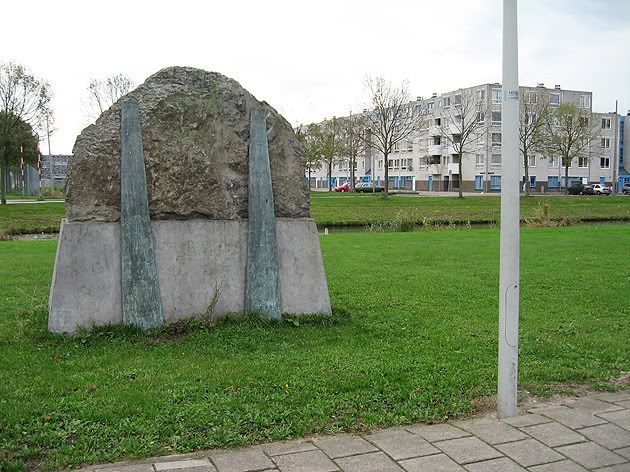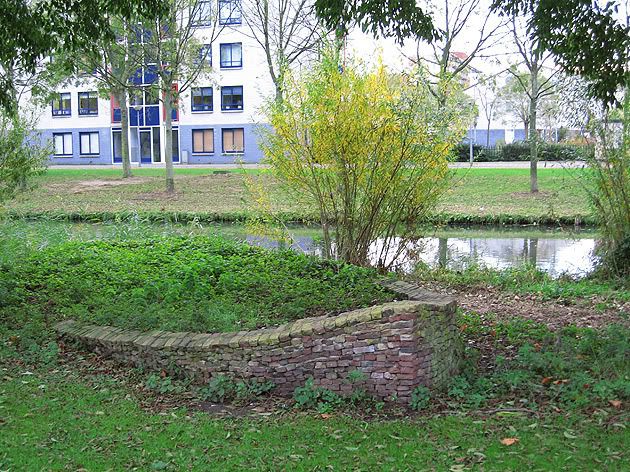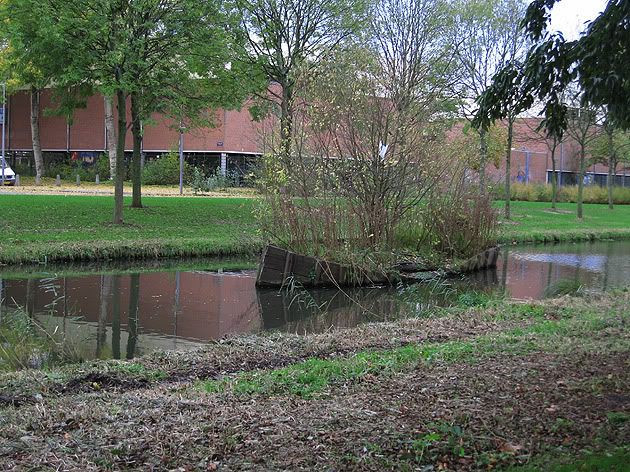Public Art in the Venserpolder
During my walks around the Venserpolder with An, I was introduced as the Kunstmeester , or the Art Master to the residents who didn’t speak Dutch. It was kind of odd having a random title like that thrown on you, but if it made her job as Wijkmeester any easier, I was happy to go along with it.
The whole concept of a Kunstmeester in the Venserpolder is, if truth be told, slightly odd. By my count, there’s 3 works of public art in the neighborhood. Out of curiosity I did some checking, and discovered that there was at least one, to two, more works that I hadn’t seen, or had forgotten.
The public art there falls under the old school, modernist "let’s stick something on a pedestal, or just make it big and plant it here, and please, please, please – no content" genre. None really seem to have any connection or engagement with the neighborhood, the location, or the people living there, and to make matters worse – none of them have any real aesthetic appeal.
Along the Christiesingel there’s a semi-circle rock. I don’t know who the artist is, or when it was made. It’s a roughly chiseled stone sitting on top of a concrete pedestal, with some decorative supports.

Then there’s the ‘boats’. I’m not 100% sure if this is a public work of art, or a piece of landscape architecture. There’s some boat shapes, reminiscent of Renzo Piano’s Nemo Museum, made out of brick, coming up, or sinking into, the grass, along the canal.

In the middle of the Dotojeveskisingel is a boat in the canal, with grass/trees/vegetation growing out of it.

If anyone knows who’s responsible for either works, could you let me know?
Now, moving along, there’s the “Sail’, which is how An referred to it, if I recall correctly. I was able to find some info on the work , and discovered that it’s 1990 piece by Jos Kokke. Apparently Kokke was referring to the obelisks in Paris, because he felt that the streets of the Venserpolder were reminiscent to the wide boulevards of the city of light. He got one thing right – the streets in the Venserpolder are wide.

Then there’s the two pieces I have yet to see. One is in/at the Venserpolder Metro station, a work by Michel Somers. I suppose I missed it because I ride my bike to the Venserpolder, instead of taking the metro. The piece has a Smith, caro, minimalist aesthetic, which isn't a great surprise considering that it's from 1979. I’ll refrain from further comment, mostly because I haven’t seen it with my own two eyes.

The other ‘work’, which I found on the amsterdamzuidoost.net website is in a playground , at the Basisschool de Schakel, on Dumaslaan. Apparently it's from 1985, and the artist's name is E. van Lopik. The author on the website wasn’t sure if it was art or not. I can understand . That's about all I know about it, I'm afraid.

So, that’s a brief recap of past artists endeavors in the Venserpolder. I think it’s fairly obvious that none of us will be planting a modernist sculpture along a canal, or in one for that matter, but I thought it was still good to know.

1 Comments:
Hi Otto,
It's depressing to read your impressions of the works of art in Venserpolder. On the whole you are quite right. Anyway, I'm able to give you a bit more information about some of the works you mentioned.
1. The stone on the pedestal with the bronze "holder" is by Evert van Kooten Niekerk and is called "Maria Planeta Citta". It was placed in 1991. If I remeber correctly, the sculptor wanted to give a reaction on the rigid pattern of streets and houses.
2. The boats (1988)are by Kees Bierman, an artist.The boat in the water is of wood en the two on the 'shore' are of brick. Bierman is interested in traces, left by human beings. Therefore, he wanted to link present and past with these boats because in the past there was only water here. The brick boats on the shore represent the impossibility of sailing here any longer.
5. The last work you mentioned, is a reference to the name of the school:'De Schakel' means link. The title of the work is 'Schakels' (1985),links/connections like for instance the links (do you call it like that?) in a curb chain. And that's what you see. It was not ment as a playing object but as a work of art.
The only work of art that, as for me, remains in being are the boats.
Bye!
Niesje (CBKZO)
Post a Comment
<< Home